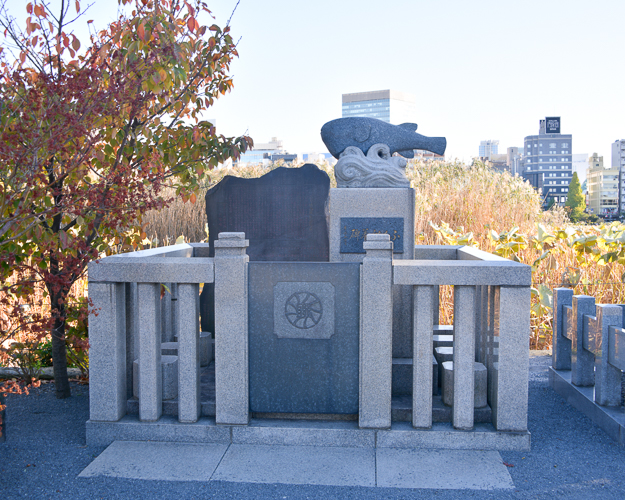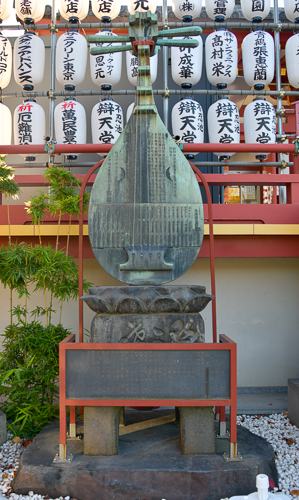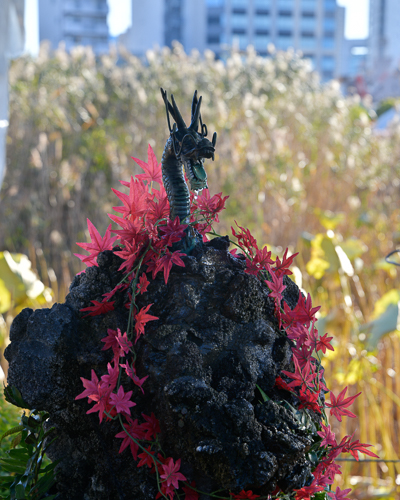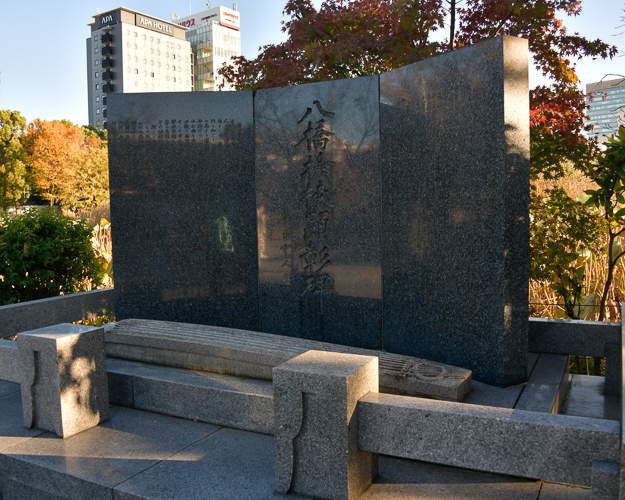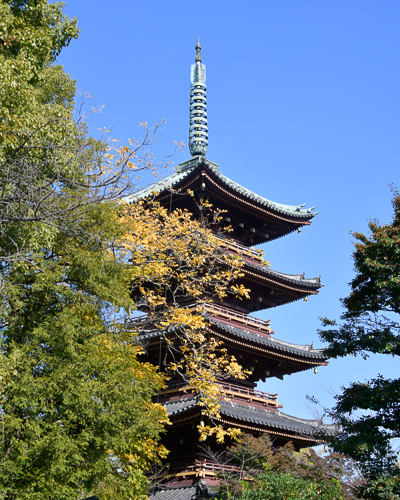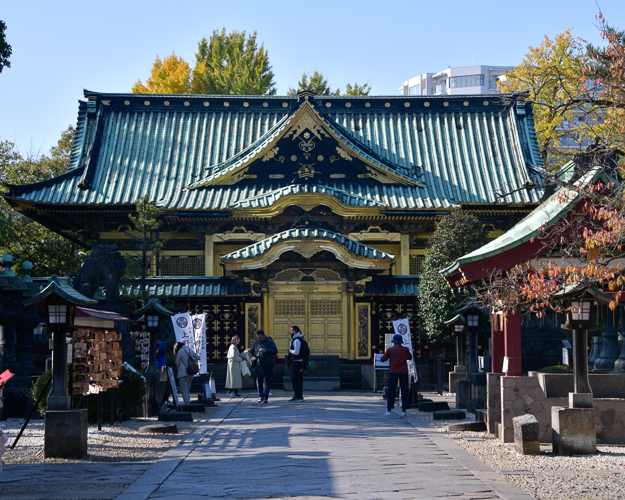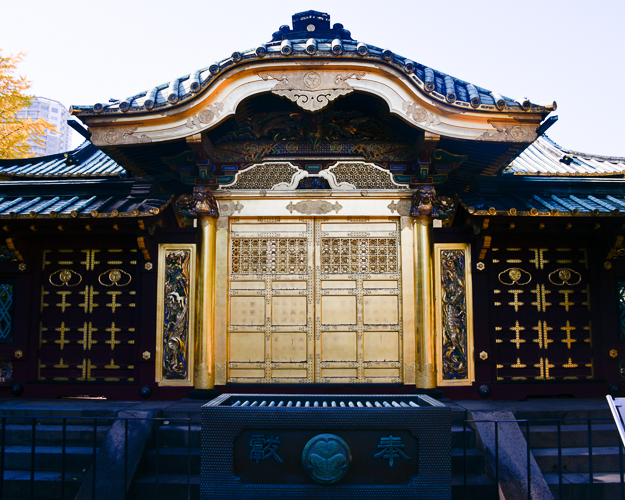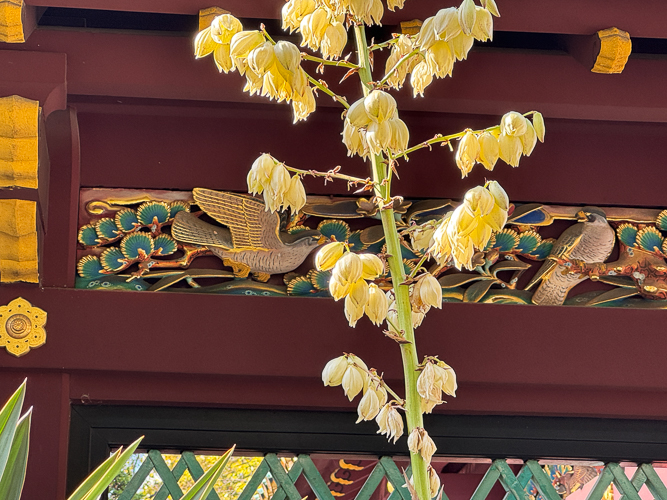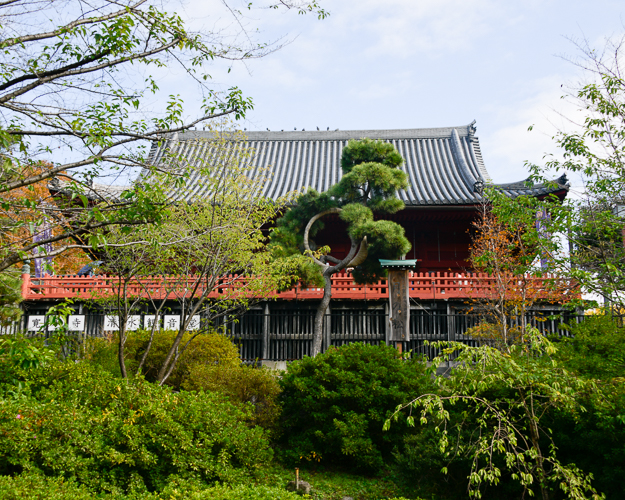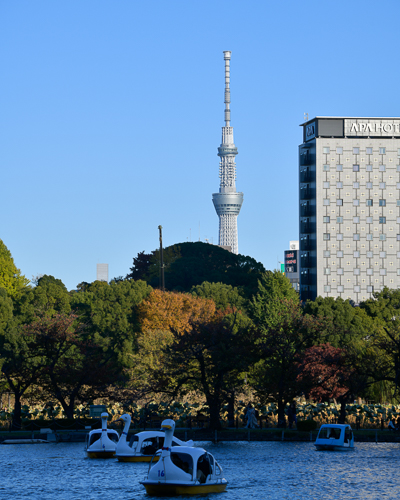November 2023
Ueno Park sits on land that once belonged to Kan’ei-ji, founded in 1625 in the unlucky direction to the northeast of Edo Castle. Most of the temple buildings were destroyed in the Battle of Ueno in 1868 during the Boshin War when the Tokugawa shogunate was defeated by those wanting to restore the emperor to power.
The triumphant emperor gifted the land to the nation.
Benten-dō Temple is located on a small artificial island on Shinobazu Pond in Ueno Park. The pond is chock a block full of lotus flowers. Benten-do is part of the Kan’ei-ji complex.
The temple is also surrounded by various memorials. This is the Fugu Tsuitō-hi, or the Blowfish Memorial. The Tokyo Fugu Cuisine Association dedicated it to the spirits of the fugu. The monument is offered in gratitude and in the hope that there are no future deaths by poisoning.
Part of the Toeizan Kan’eiji Temple, this five-story pagoda is one of the remaining buildings. First built in 1631 and rebuilt in 1639, the pagoda is about 118 feet high from the ground to the hoju (uppermost spherical part) and has a five-tiered structure. The roof of the fifth and uppermost floors is covered in copper sheets, while the rest of the roofs are in traditional Japanese ceramic tiles. The pagoda is technically in the zoo, so I was only able to glimpse it from the park.
First established in 1627 by Tōdō Takatora and renovated in 1651 by Tokugawa Iemitsu, the Toshogu shrine has remained mostly intact since that time, making it a great example of Shinto architecture in the Edo period. It is truly stunning.
One of the more spectacular points of the Toshogu Shrine is the karamon. A karamon is a type of gate in Japanese architecture characterized by the use of karahafu, a type of curved gable with a style particular to Japan. This karamon was built in 1651.
This is the Kiyomizu Kannon-do, first established in the early 1630s, when it was one of the structures of Kaneiji Temple. It has been in its present location since the 1690s. The tree is the famous Moon Pine, with branches creating a circle right in front of the balcony.
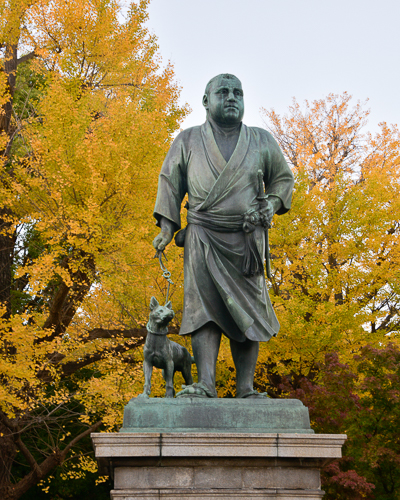
Saigo Takamori was one of the most influential samurai in all of Japan. A man often dubbed as the ‘last true samurai.
Takamori was the inspiration behind the film ‘The Last Samurai’. A man of many talents, Takamori led Japanese fighters during the 1877 Satsuma Rebellion and also wrote poetry under the name Saigo Nanshu.
This is a small sampling of the historic, interesting, and fun things to be found in Ueno Park. If that is not enough for you, the park is also home to these Six Museums:
1. National Museum of Nature and Science
2. Tokyo Metropolitan Art Museum
3. Tokyo National Museum
4. Ueno Royal Museum
5. National Museum of Western Art
6. Shitamachi Museum


